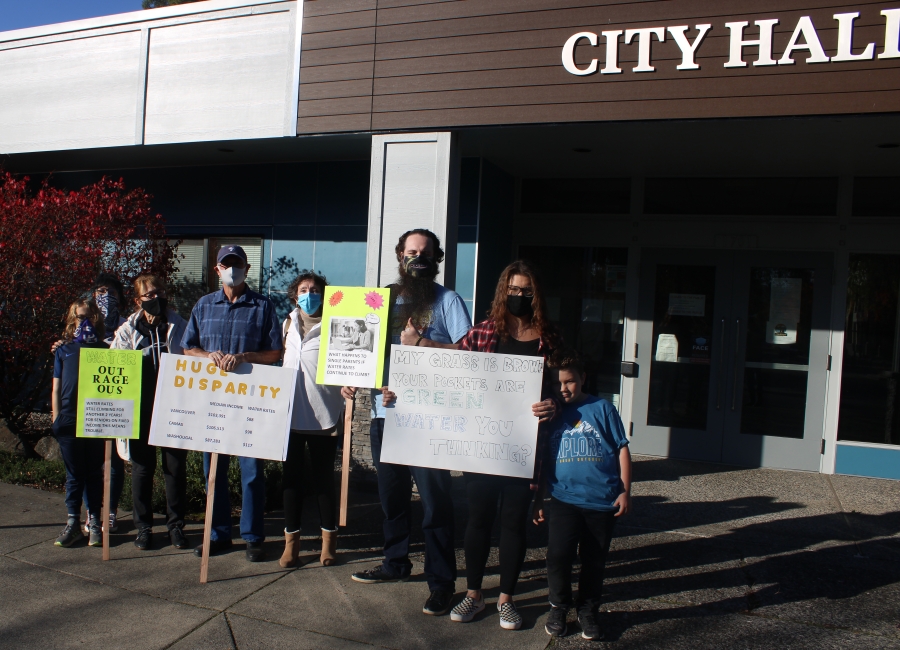When Ashley Rheault opened her most recent water bill from the city of Washougal, she simply couldn’t believe her eyes.
Nobody, she thought, should have to pay $452.11 for two months’ worth of water. She desperately hoped that the number was a misprint of some sort. After all, she had been charged only $380 on her previous bill and, as far as she knew, hadn’t increased her water consumption.
“I was overwhelmed with surprise, anger and confusion,” she said. “I was scared because I didn’t know how we were going to pay for it. I was angry because I thought the city was trying to pull one over on us.”
Rheault is one of several Washougal residents who are demanding answers about their recent water bills, which they claim are significantly higher than previous invoices.
About 10 people gathered in front of City Hall on Oct. 27 to protest the increases.
“We want them to know that we’re not just going to roll over,” Rhehault said. “We’d like to know why the increases are happening and where the money is going and when it’s going to stop. It doesn’t make any sense whatsoever. We’re not going to tolerate it.




